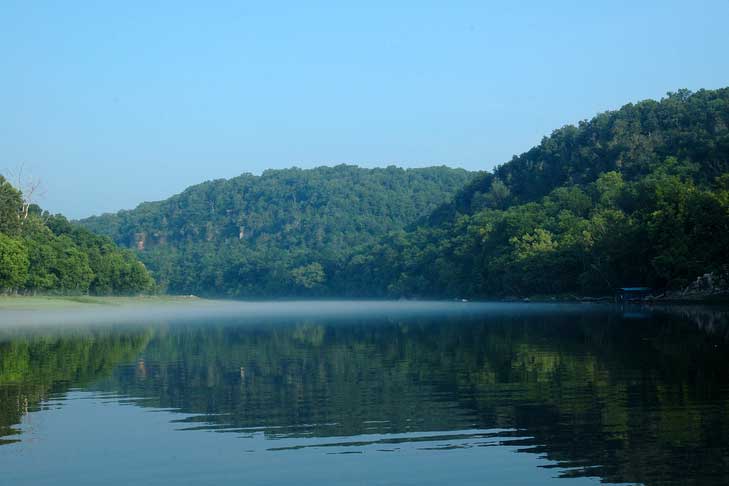The White River in Arkansas is an excellent trout fishery, but only because it’s trout section flows out of the bottom of a dam, creating a constant supply of cold water.
By Jared Carpenter
It’s safe to say that most TU members fish in the tailwaters below dams at least occasionally. Essentially, tailwaters are the river flows below dams and other hydraulic structures that provide a steady supply of cold water necessary for trout habitat. However, while dams harm aquatic ecosystems through de-watering and habitat fragmentation, for many Trout Unlimited members in warmer regions of the country coldwater tailwaters are the only places to find trout in their areas. In the face of climate change, tailwater fisheries will become increasingly important refuges for trout, and we need to start working today to protect them.
The nation’s tailwater fisheries already face environmental challenges, such as low water flows that can strand trout, ramping for power generation that can scour banks and threaten angler safety, and chemical changes such as low dissolved oxygen. These stresses will only increase in the face of climate change. But the temperature changes associated with climate change will likely not be the biggest threat to tailwater fisheries. Tailwaters should remain cool, given that the water comes from the lowest depths of reservoirs that maintain a relatively stable temperature year round. Instead, it will likely be the shifting weather patterns associated with climate change, particularly extended periods of drought and the occasional deluge, that will have the most impact.
Any extended drought conditions will mean increased competition for a dwindling supply of water from the same reservoir. Stresses on tailwater fisheries will intensify as multiple users compete for limited water, with growing human consumption from expanding development, agricultural consumption from irrigation, and power generation itself. As climate change shifts weather patterns, these stresses will increase. Instead of direct warming impacts, climate change is more likely to lead to management changes in the use of the water that will lower conservation flows and choke out downstream trout habitat. Namely, as water becomes scarcer and reservoir pools become lower, less water will be directed to the tailrace and instead stored or used for other purposes.
Recent weather and manmade events have given us a sample of the future impacts on tailwater fisheries by climate change and a potential roadmap to counter them. In the face of climate change, we need to work both to mitigate its effects by reducing greenhouse gas emissions and prepare to adapt to its effects. Protection of tailwater fisheries is part of this adaptation and is something with which chapters and individuals can be more directly involved.
Due to past droughts and competition for water consumption of the reservoirs behind the dams, we already have a good idea of the coming battle to protect tailrace fisheries. Water will become scarcer and competition for this water between users will become fiercer. But the key will be setting up effective management today to ensure conservation flows in the future. With tailwater fisheries, we can predict what the climate change stressors will be, and protection of these fisheries will become more and more important in the future.
Jared Carpenter is TU’s National Leadership Council representative from Vermont.



